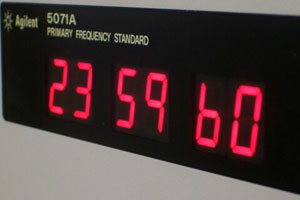Some cutting-edge scientific research depends on accurate time, sometimes to millisecond. The observatory I worked at in Flagstaff, Arizona-- the Naval Prototype Optical Interferometer-- was so dependent on accurate time that one night our interferometric observations could not be made because there had been a leap second no one had taken into account!
So why do we have leap seconds? When it is explained that leap seconds have something to do with the fact that the Earth's rotation slowly changes over time, people often make the assumption that the Earth's rotation has slowed down by a second since the last leap second (and leap seconds occur roughly every 20 months). But if this were so, then in a mere 144,000 years the Earth's spinning would grind to a complete stop! In reality, at present, the Earth's rotation slows by about 1.7 milliseconds per century (a millisecond is one thousandth of a second).
With leap seconds, it's important to understand that the adjustment doesn't reflect how much the Earth's rotation has changed since the last leap second, but rather the difference in the length of a day between two different time systems that have gradually drifted apart over a century or so: mean solar time and coordinated universal time (UTC).
For a long time, the second was defined as 1/86,400th of a mean solar day. But around the middle of the 20th Century it was realized that a mean solar day, based on Earth's rotation, slows over time through tidal friction, and also varies due to mass shifts, such as glacial rebound.
In 1956, the second was redefined to be based on the Earth's revolution around the Sun: one second was set to be 1/31,556,925.9747th of the mean solar year of 1900. But even this was decided to be too variable over time to be the basis for a uniform time system.
So, in 1967, another, far more uniform natural rhythm was used to again redefine the second: oscillations of the atom Cesium-133, which can be measured with an atomic clock. One second in the new time system (UTC) was equal to 9,192,631,770 oscillations of a particular ground state of Cesium-133. As it was contrived, the length of one second of mean solar time and UTC time were exactly equal in 1820...
...but since 1820, the Earth's rotation has slowed so that now, the mean solar day is about 86,400.002 seconds long as measured by the UTC system---2 milliseconds longer than in 1820. So every 500 days that difference grows to 500 x 0.002 = 1 second. A leap second is born.
That makes 2008 an exceptionally long year, since it was also a leap year: 366 days, 1 second. I hope you enjoyed it!
37.7631 -122.409
 23 hours 59 minutes 60 seconds---this is what a leap second
23 hours 59 minutes 60 seconds---this is what a leap second